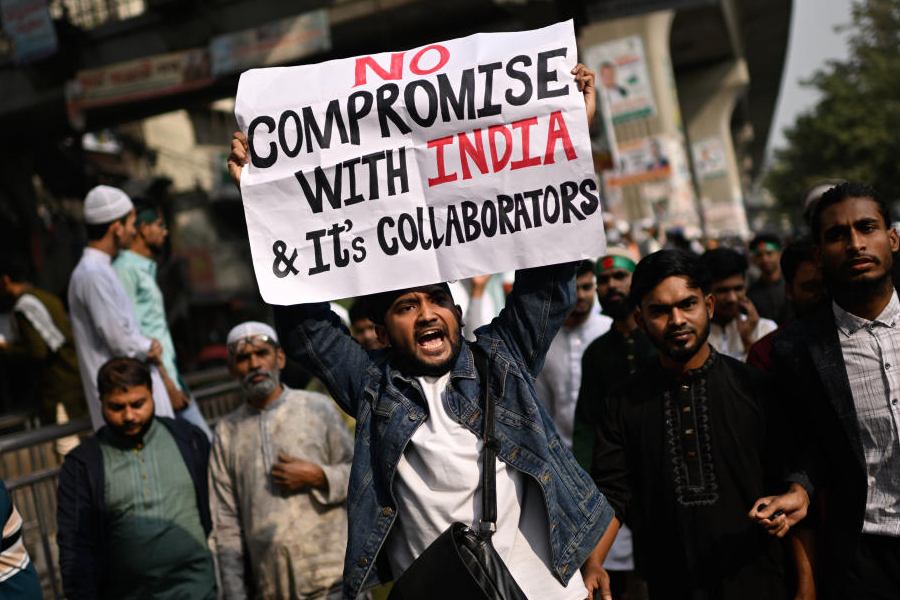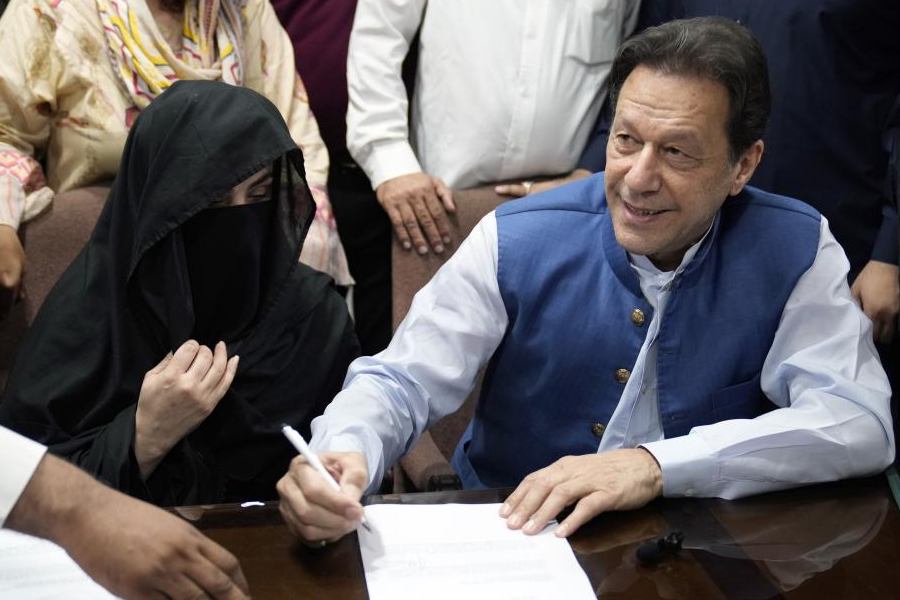Auctioneer Andrew Stowe could scarcely believe the moment he brought the hammer down at a staggering £260,000 (Rs 2.5 crore) for a pair of “gold-plated circular-rimmed spectacles” that Mohandas Karamchand Gandhi had worn when he was a lawyer in South Africa in the 1920s, far exceeding the price estimate of between £10,000 (Rs 9.8 lakh) and £15,000 (Rs 14.7 lakh) placed on them prior to Friday’s online auction at East Bristol Auctions in Hanham, Bristol.
Six minutes into the auction, Stowe gave what auctioneers call “fair warning” before giving a sharp tap with his gavel: “If you are interested I will count you down — going once at 260, twice at £260,000, your final, final call at £260,000 — round of applause is definitely required at £260,000…. sold!”
The art market weekly, Antique Trade Gazette, reported that the successful bidder in America will have to pay a 21.6 per cent “buyer’s premium” on top of the hammer price, which means he will have to write out a cheque for £316,160 (Rs 3.1 crore).
The auction has wider ramifications because some anti-Indian groups in the UK, involving the usual suspects, have tried to use the cover of “Black Lives Matter” to denigrate Gandhi and campaign, for example, for the removal of his statue in Leicester.
These groups believe that if Gandhi can be equated with Cecil Rhodes or Robert Clive or slave owners in general, it would also undermine the standing of Indians in Britain. The auction is a reminder that 72 years after his death, the Mahatma still retains his relevance.
“The price is outstanding, but it’s not about the money,” commented Stowe after the sale. “We had interest from all over the world — bids came from India, Qatar, American, Russia, Canada. It’s completely spellbinding, and a wonderful thing to be a part of.
“It’s been a complete honour to handle these spectacles and find them a new home. These glasses represent not only an auction record for us, but a find of international historical importance. Gandhi’s glasses have surpassed all expectations, and previous house records. It’s been a great day.”
The vendor is an elderly man from Mangotsfield, once a village north-east of Bristol, who intends sharing his unexpected windfall with his daughter. It turns out that the man’s uncle, who had been working in South Africa for BP, had been gifted the pair by Gandhi by way of thanks for some good deed.
“These glasses have been lying in a drawer for the best part of 50 years,” said Stowe.
The spectacles were left in a letter box at the auction house over one weekend in a plain white envelope, with a cursory note. Stowe said: “The vendor literally told me to throw them away if they were ‘no good’. Now he gets a life-changing sum of money.”
The vendor nearly “fell off his chair” when first told he might get up to £15,000 for the spectacles. “The owner had no idea of their value, and would’ve been quite happy to receive £50 for them, I’m sure. These are probably the most famous pair of spectacles we’ve ever had, and the most important historical item we’ve found.”
However, he conducted a thorough research into the provenance of the spectacles before including them in the auction of “military & history” memorabilia.
Stowe continued: “We first looked at the story to verify it was possible. The vendor’s uncle was in South Africa at the right time, as was Gandhi. We then looked at the specifics of the glasses, which also matched other known examples in museums.
“Then we discovered one pair in a museum which has the bridge section distinctly distorted to fit Gandhi’s nose, and ours carries the identical distortion — that can only be something specific to Gandhi. Unfortunately, through 100 years and three generations, the story hasn’t been preserved as neatly as we’d all like — but the broadstrokes are all there, and all the pieces of the jigsaw slotted together perfectly.”











